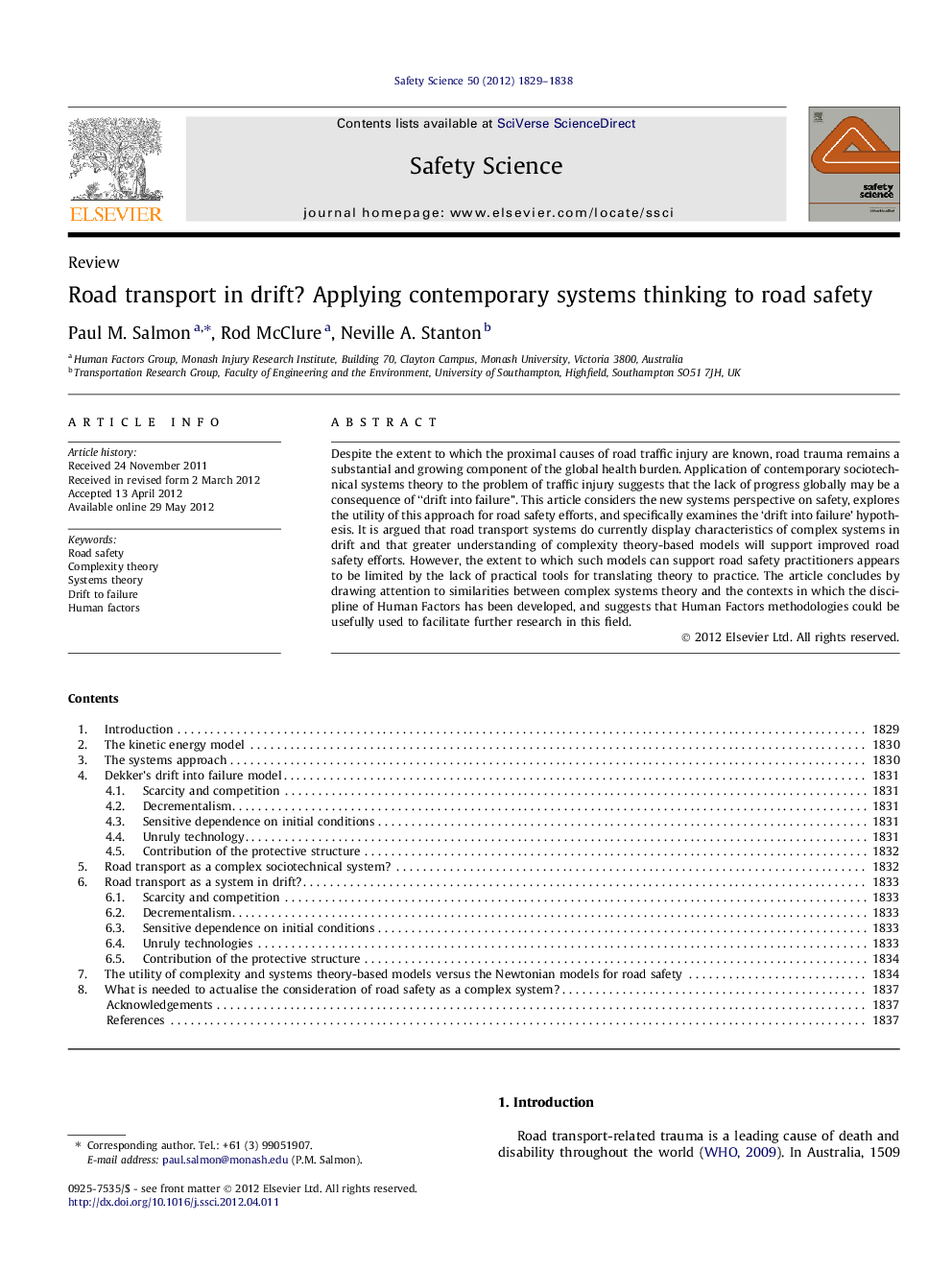| Article ID | Journal | Published Year | Pages | File Type |
|---|---|---|---|---|
| 589348 | Safety Science | 2012 | 10 Pages |
Despite the extent to which the proximal causes of road traffic injury are known, road trauma remains a substantial and growing component of the global health burden. Application of contemporary sociotechnical systems theory to the problem of traffic injury suggests that the lack of progress globally may be a consequence of “drift into failure”. This article considers the new systems perspective on safety, explores the utility of this approach for road safety efforts, and specifically examines the ‘drift into failure’ hypothesis. It is argued that road transport systems do currently display characteristics of complex systems in drift and that greater understanding of complexity theory-based models will support improved road safety efforts. However, the extent to which such models can support road safety practitioners appears to be limited by the lack of practical tools for translating theory to practice. The article concludes by drawing attention to similarities between complex systems theory and the contexts in which the discipline of Human Factors has been developed, and suggests that Human Factors methodologies could be usefully used to facilitate further research in this field.
► Road safety efforts have been driven by a Newtonian, reductionist approach. ► New complexity and systems-theory based approaches offer a new approach. ► We test Dekker’s new drift into failure (DIF) model in the road transport context. ► Models such as DIF are applicable but lack practical guidance for applications. ► Systems-based Human Factors methods can be used to facilitate DIF applications.
